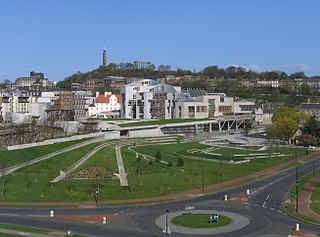This is a timeline of architecture, indexing the individual year in architecture pages. Notable events in architecture and related disciplines including structural engineering, landscape architecture, and city planning. One significant architectural achievement is listed for each year.
The year 1902 in architecture involved some significant events.
The year 1880 in architecture involved some significant architectural events and new buildings.
The year 1931 in architecture involved some significant events.
The year 1752 in architecture involved some significant events.
The year 1792 in architecture involved some significant events.
The year 1858 in architecture involved some significant events.

Sir Herbert Baker was an English architect remembered as the dominant force in South African architecture for two decades, and a major designer of some of New Delhi's most notable government structures. He was born and died at Owletts in Cobham, Kent.

William Adam was a Scottish architect, mason, and entrepreneur. He was the foremost architect of his time in Scotland, designing and building numerous country houses and public buildings, and often acting as contractor as well as architect. Among his best known works are Hopetoun House near Edinburgh, and Duff House in Banff. His individual, exuberant style built on the Palladian style, but with Baroque details inspired by Vanbrugh and Continental architecture.
The New Town is a central area of Edinburgh, the capital of Scotland. It was built in stages between 1767 and around 1850, and retains much of its original neo-classical and Georgian period architecture. Its best known street is Princes Street, facing Edinburgh Castle and the Old Town across the geological depression of the former Nor Loch. Together with the West End, the New Town was designated a UNESCO World Heritage Site alongside the Old Town in 1995. The area is also famed for the New Town Gardens, a heritage designation since March 2001.
The year 1721 in architecture involved some significant events.
The year 1882 in architecture involved some significant architectural events and new buildings.
The year 1824 in architecture involved some significant events.

St. Paul's Cathedral is a Church of North India (CNI) cathedral of Anglican background in Kolkata, West Bengal, India, noted for its Gothic architecture and dedicated to Paul the Apostle. It is the seat of the Diocese of Calcutta. The cornerstone was laid in 1839; the building was completed in 1847. It is said to be the largest church in Kolkata and the first Anglican cathedral in Asia. It was also the first new-built cathedral in the overseas territory of the British Empire. The edifice stands on Cathedral Road on the "island of attractions," the site chosen in order to provide for more space for the growing population of the European community in Calcutta in the 1800s.
The architecture of Mumbai blends Gothic, Victorian, Art Deco, Indo-Saracenic & Contemporary architectural styles. Many buildings, structures and historical monuments remain from the colonial era. Mumbai, after Miami, has the second largest number of Art Deco buildings in the world.

The architecture of Scotland includes all human building within the modern borders of Scotland, from the Neolithic era to the present day. The earliest surviving houses go back around 9500 years, and the first villages 6000 years: Skara Brae on the Mainland of Orkney being the earliest preserved example in Europe. Crannogs, roundhouses, each built on an artificial island, date from the Bronze Age and stone buildings called Atlantic roundhouses and larger earthwork hill forts from the Iron Age. The arrival of the Romans from about 71 AD led to the creation of forts like that at Trimontium, and a continuous fortification between the Firth of Forth and the Firth of Clyde known as the Antonine Wall, built in the second century AD. Beyond Roman influence, there is evidence of wheelhouses and underground souterrains. After the departure of the Romans there were a series of nucleated hill forts, often utilising major geographical features, as at Dunadd and Dunbarton.

Sir George Washington Browne was a Scottish architect. He was born in Glasgow, and trained there and in London. He spent most of his career in Edinburgh, although his work can be found throughout Scotland and beyond. He was involved in nearly 300 projects, including many public and commercial buildings. One of his most notable buildings is Edinburgh's Central Library, and he became recognised as an authority on library planning and design. He came to national attention after winning a competition to design a bridge over the River Thames in London, although this was never realised. He was the first architect to be elected as President of the Royal Scottish Academy. He also served as President of the Edinburgh Architectural Association, and was instrumental in setting up the Royal Fine Art Commission for Scotland.
Sir William Emerson was a British architect, who was President of the Royal Institute of British Architects (RIBA) from 1899 to 1902, and worked extensively in India. He was the original architect chosen to build Liverpool Cathedral.
Events from the year 1761 in Scotland.





